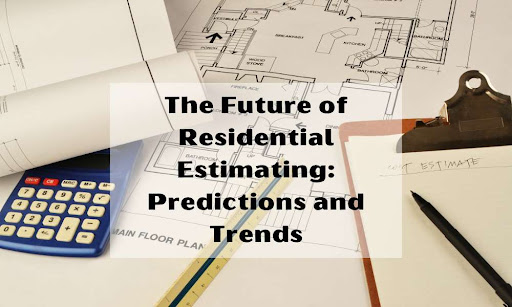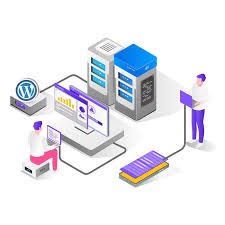
Residential estimating is an essential aspect of the construction industry, providing accurate cost estimates for building projects. However, with advancements in technology and changes in the industry, the future of residential estimating is rapidly evolving. From the use of artificial intelligence to virtual reality, predicting the future of residential estimating is crucial for companies to remain competitive in the construction industry. In this blog, we will explore some of the predictions and trends for the future of residential estimating.
Current State of Residential Estimating
Residential estimating is a critical aspect of the construction industry, allowing contractors to accurately predict the costs and materials needed for a project. The current state of residential estimating involves a mix of traditional manual calculations and modern software tools. In this article, we will discuss the advantages and disadvantages of each method, as well as provide statistics on the current state of the industry.
Manual Calculations
Manual calculations are the traditional method of residential estimating. They involve the use of a pen, paper, and a calculator to determine the cost of a project. This method requires a significant amount of time and effort, as the estimator must calculate each aspect of the project individually. However, it does have some advantages, including:
Advantages:
- Accuracy: Manual calculations can be highly accurate when performed by an experienced estimator.
- Flexibility: Estimators can quickly adjust calculations based on changes in the project scope or materials.
- Cost-effective: Manual calculations are relatively inexpensive compared to software tools.
Disadvantages:
- Time-consuming: Manual calculations can be time-consuming, especially for larger and more complex projects.
- Human error: Manual calculations are prone to human error, which can lead to inaccuracies in estimates.
- Limited scalability: Manual calculations are limited in their scalability, making them unsuitable for large projects.
Software Tools
Modern software tools have revolutionized the residential estimating process. These tools use algorithms and databases to automate the estimation process, significantly reducing the time and effort required. Some popular residential estimating software tools include PlanSwift, Blue beam Revu, and RSMeans.
Advantages:
- Speed: Software tools can quickly calculate estimates for large and complex projects.
- Accuracy: Software tools use databases and algorithms to reduce the risk of human error, resulting in highly accurate estimates.
- Scalability: Software tools can handle large and complex projects with ease.
Disadvantages:
- Cost: Software tools can be expensive, particularly for small contractors and construction firms.
- Learning curve: Learning to use software tools can take time and effort, particularly for those who are not tech-savvy.
- Inflexibility: Software tools can be less flexible than manual calculations, particularly when dealing with unique or unusual projects.
Current State of the Industry
According to a report by Allied Market Research, the global construction estimating software market is expected to grow at a CAGR of 9.2% from 2020 to 2027. This growth is being driven by the increasing demand for accurate and efficient estimating tools. The report also found that the cloud-based segment of the market is expected to grow the fastest, as more contractors move towards cloud-based solutions for their estimating needs.
Predictions for the Future of Residential Estimating
Residential estimating has been an essential part of the construction industry for many years, providing accurate cost projections for residential construction projects. In recent years, emerging technologies such as artificial intelligence (AI), machine learning, automation, and robotics have disrupted various industries, and residential estimating is no exception. This article will explore predictions for the future of residential estimating and the potential impact of these emerging technologies.
AI and Machine Learning
One of the most significant advancements in residential estimating is the adoption of AI and machine learning. AI algorithms can analyze vast amounts of data and use that data to make accurate predictions about future construction costs. Machine learning can identify patterns and anomalies in the data to improve the accuracy of cost estimates continually.
For example, software programs like Stack allow builders and contractors to upload project plans, and then the program will automatically calculate the number of materials needed and their cost. In the future, we can expect AI and machine learning to become even more sophisticated, providing even more accurate cost projections.
Adoption of Automation and Robotics
Another emerging technology that is predicted to impact the residential estimating industry is automation and robotics. Automation involves using software or machines to perform repetitive tasks, while robotics refers to the use of robots to perform tasks that require physical dexterity.
In residential estimating, automation can be used to generate estimates quickly and accurately, eliminating the need for manual calculations. Robotics can be used to perform physical tasks such as site inspections, improving the accuracy of estimates and reducing the time it takes to complete a project.
For example, drones can be used to capture aerial footage of a construction site, which can then be used to generate accurate 3D models of the site. These models can be used to create accurate cost projections, and the data can be used to optimize construction processes to reduce waste and improve efficiency.
Implementation of Predictions in the Industry
Many construction companies and software developers are already implementing these predictions into the residential estimating process. For example, ProEst is a software program that uses AI and machine learning to generate accurate cost projections for residential construction projects. The software can analyze data from previous projects and use that data to make more accurate predictions about future projects.
Another example is the use of BIM (Building Information Modeling) software, which allows builders and contractors to create 3D models of buildings and construction sites. These models can be used to identify potential issues and optimize construction processes to reduce waste and improve efficiency.
Conclusion
The construction industry is continuously evolving, and residential estimating is no exception. With advancements in technology, companies are now using digital tools to increase accuracy and speed up the estimation process. The future of residential estimating will see an increased use of artificial intelligence and machine learning algorithms to provide more precise cost estimates.
Additionally, the use of virtual and augmented reality will provide a more immersive experience in the estimation process, allowing contractors and clients to visualize the end product before construction begins. As the industry continues to evolve, it is essential for companies to stay up to date with the latest technologies and trends to remain competitive. By embracing these changes and adapting to new tools and techniques, companies can ensure that they are providing accurate cost estimates and delivering quality projects to their clients.









